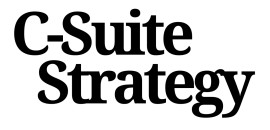
Understanding the Role of IT in Corporate Strategy
The Impact of IT on Strategic Initiatives
Understanding the role of IT within your corporate structure is pivotal for strategic success. In today's business environment, the IT department is not merely a support function; it is integral to the decision-making and strategic planning processes. An effective IT framework aligns with and enhances company objectives, driving organizational development and digital transformation.
Consider the organizational chart and how specialized roles within your IT team can bolster the company's mission. The chain of command should facilitate seamless collaboration between departments, ensuring that IT capabilities support business strategy. This alignment strengthens your organization's ability to adapt quickly and effectively to market changes.
Moreover, a well-structured IT framework contributes to the security of corporate operations. By prioritizing cybersecurity measures within the IT structure, companies can safeguard sensitive information and maintain operational continuity. In the context of evolving threats, integrating robust security protocols into the business framework is non-negotiable.
As you assess the impact of IT within your company, think about the role of technical support and software solutions that can streamline operations. With a focus on scaling IT solutions, businesses position themselves for growth and enhance their competitive edge.
For further insights into real-world applications of IT in strategic settings, explore the impact of lean management on corporate strategy.
Assessing Current IT Capabilities
Evaluating IT Framework for Strategic Alignment
As companies aim to bolster their competitive edge, assessing current IT capabilities becomes crucial for strategic success. This process is not merely a technical audit but a comprehensive review of how IT supports the overarching goals of the organization. In order to truly leverage IT as a strategic asset, businesses must effectively evaluate the existing structure.
Start by examining your organizational structure with keen attention to the roles and responsibilities within your IT department. Assess whether your organizational design facilitates seamless integration with other departments. For companies embarking on digital transformation, the ability to adapt and scale IT operations is pivotal.
- Organizational Roles: Clearly define the roles within your team structure. Ensure that specialized roles focus on innovation and technical support, while management emphasizes strategic alignment.
- Department Structure: Evaluate whether your department structure supports the flow of information and decision-making processes. Strive for a balance between centralized oversight and decentralized execution.
- Technological Support: Consider the software and tools currently in use. Are they conducive to achieving business objectives, or do they hinder development? Your employees' ability to work efficiently hinges on having the right tools at their disposal.
- Chain of Command: Inspect your chain of command within the IT and related departments to ensure efficiency and clear communication. An effective organizational chart illustrates the formal route for decision making, crucial for expediting digital initiatives.
As you adjust your company’s IT framework, prioritize fostering interaction between IT teams and other departments. This collaborative environment enhances the company’s ability to respond to changing market demands. For additional ways to utilize your IT department in strategic planning, consider harnessing the power of innovative practices regularly.
Aligning IT with Business Objectives
Creating Synergy Between IT and Core Business Goals
In today's competitive landscape, aligning IT with your business objectives is no longer a choice; it's a necessity. Organizations often find themselves tethering between maintaining existing technology and pursuing new opportunities for digital transformation. This integration becomes significant when your team seeks to transform IT from being a mere support function to a pivotal enabler of strategic success. Achieving this alignment starts with a deep understanding of your company’s long-term goals and how IT can play a transformative role in meeting them. Your organizational structure might need to evolve, where clarity in roles responsibilities within IT becomes paramount. To facilitate better synergy, consider these strategic points:- Redefine Department Structures: Evaluate your current org structure. It is crucial to craft a department structure that supports cross-functional collaboration between your IT teams and other business units. Your organizational chart should reflect specialized roles that drive innovation and improve operations.
- Incorporate Decision Making into IT Design: At the heart of any effective organizational design is the ability to make decisions that align with business strategy. Your IT department should be part of the decision making process at both strategic and operational levels, ensuring that technology solutions are not only relevant but also scalable.
- Leverage Technical Support for Growth: The role of technical support transcends traditional troubleshooting. In a well-aligned organization, it enables continuous improvement and seamless workflow, facilitating tasks that form the backbone of business growth.
Investing in Scalable IT Solutions
Investing in Scalable Solutions for Long-term Growth
To truly harness the power of technology within your organization's framework, it's essential to invest in scalable IT solutions. This strategic move can significantly influence the organizational structure, from department roles and responsibilities to overarching corporate strategies. Identifying software and systems that adapt and grow with your company ensures you are not just meeting current demands but are also future-proofing your operations.
Begin by assessing the growth trajectory of your business. A solid understanding of your current operational workflows and the anticipated rate of expansion will aid in identifying which IT solutions are most conducive to supporting your organizational design. Scalable solutions should seamlessly integrate with your existing systems, enhancing both technical support capabilities and operational efficiency.
Think about partnering with providers that offer flexible, upgradable software tailored to the evolving needs of your company. These solutions should provide robust support for specialized roles within your teams, enabling new levels of creativity and innovation. A well-thought-out investment strategy in scalable IT systems will reflect across your organizational charts and influence how effectively your teams and departments function.
Moreover, when evaluating IT investments, consider the impact on decision-making processes and the efficiency of your chain of command. The right technology can streamline communication and collaboration, reducing bottlenecks and facilitating a more cohesive work environment. A tech company's approach to seamless integration across business units—be it marketing departments or technical support—is often a benchmark for efficiency.
Ultimately, your investments in technology should lay the groundwork for continuous growth, supporting both your business objectives and the technical needs of your security and operations teams. By aligning these investments with your broader corporate structure, you position your organization to adapt to future challenges with agility and resilience.
Enhancing Cybersecurity Measures
Fortifying Your Company's Digital Defense
In the ever-evolving landscape of business operations, enhancing cybersecurity measures is no longer optional; it's a strategic imperative. A tech company's organizational structure must adapt to prioritize security at every level. But how can a board of directors ensure this? It starts by understanding that cybersecurity is not just a technical support issue—it's integral to business strategy.
The first step in reinforcing your company's cyber resilience is establishing a chain of command that places cybersecurity at the heart of decision-making processes. This involves creating specialized roles or even whole departments dedicated to security. These entities should have a clear place in the organizational chart, reflecting their critical influence on company operations.
Organizational design plays a pivotal role in defending against digital threats. Implementing a well-structured org chart that outlines roles and responsibilities ensures that all employees understand their part in maintaining the company’s cyber shield. Clear communication channels within this framework will empower teams to act swiftly and cohesively in the event of a security breach.
With digital transformation accelerating, the lines between IT, operations, and cybersecurity blur. There is a growing need for scalable IT solutions that both support innovation and protect critical data. Investing in robust software infrastructure that can adapt to new threats is as much about protecting the present as it is about future-proofing the organization.
Ultimately, fostering a culture of cybersecurity is a collective endeavor. Regular training for employees on the latest security practices ensures a vigilant workforce. As part of enhancing cybersecurity measures, companies should not shy away from enlisting external expertise when necessary. Specialized roles and teams within the corporate structure should have access to the latest information and techniques to counter threats.
In conclusion, aligning IT capabilities with business objectives is essential, but ensuring these capabilities are secure is vital for strategic success. With the right organizational structures and a firm commitment to digital defense, companies can protect their assets and their reputation in an increasingly interconnected world.
Fostering a Culture of Innovation
Encouraging Innovative Approaches within IT Teams
Innovation plays a critical role in modernizing your company's IT framework and driving strategic success. Within the realm of organizational structures, fostering a culture that encourages innovation is crucial. It's about creating an environment where IT teams are empowered to push boundaries and explore new solutions that align with the overarching business strategy.
A pivotal aspect of nurturing innovation is rethinking the traditional org structure. By implementing a more fluid organizational design, businesses can promote cross-functional collaboration. This facilitates the exchange of ideas across different departments, helping to eliminate silos that often stifle creativity in large organizational structures. Encouraging employees to move beyond their specialized roles and contribute to innovation can lead to the development of groundbreaking software solutions.
Another strategy is investing in ongoing development and training programs that upskill employees. Not only does this enhance the capabilities of your IT team, but it also keeps them abreast of the latest trends in digital transformation. When teams are confident in their skills and have the support of management, their ability to innovate grows exponentially.
Furthermore, integrating a clear organizational chart that delineates roles and responsibilities can support innovation efforts. When team members understand their roles within the chain of command, they can more effectively contribute to decision making. This clarity in corporate structure opens up avenues for more agile and responsive idea generation.
It's also important for the board of directors to champion innovation by embedding it into the company's core values. This top-down support sends a strong message across the company that innovation is not just appreciated but expected.
In conclusion, a culture that supports innovation is not only about flashy organizational chart changes; it's about realigning the mindset of the organization. By embracing innovative practices, companies strategically position themselves to maintain a competitive edge in an ever-evolving marketplace.














